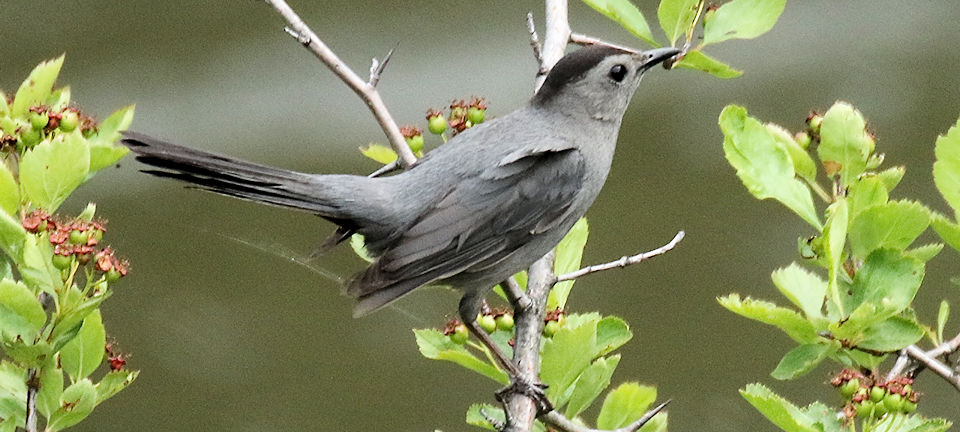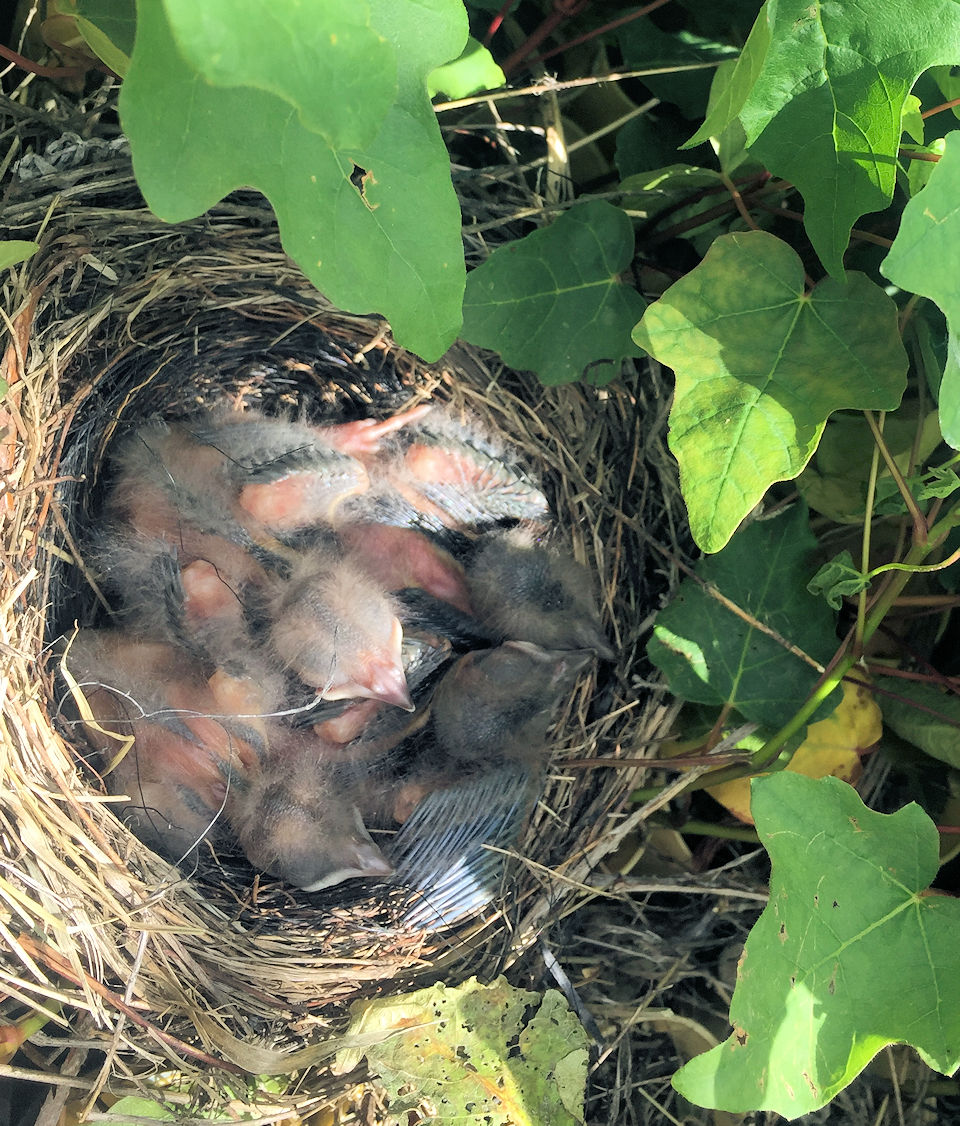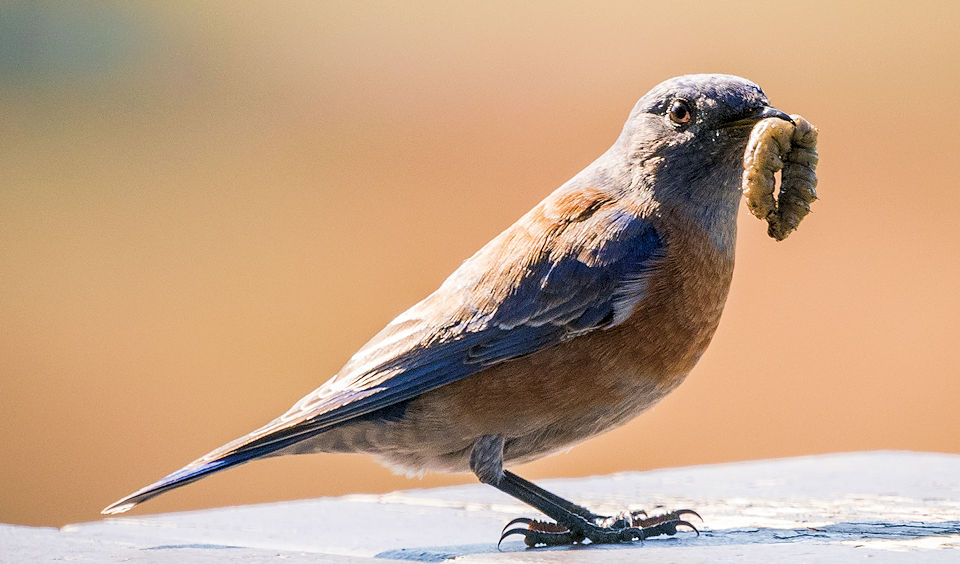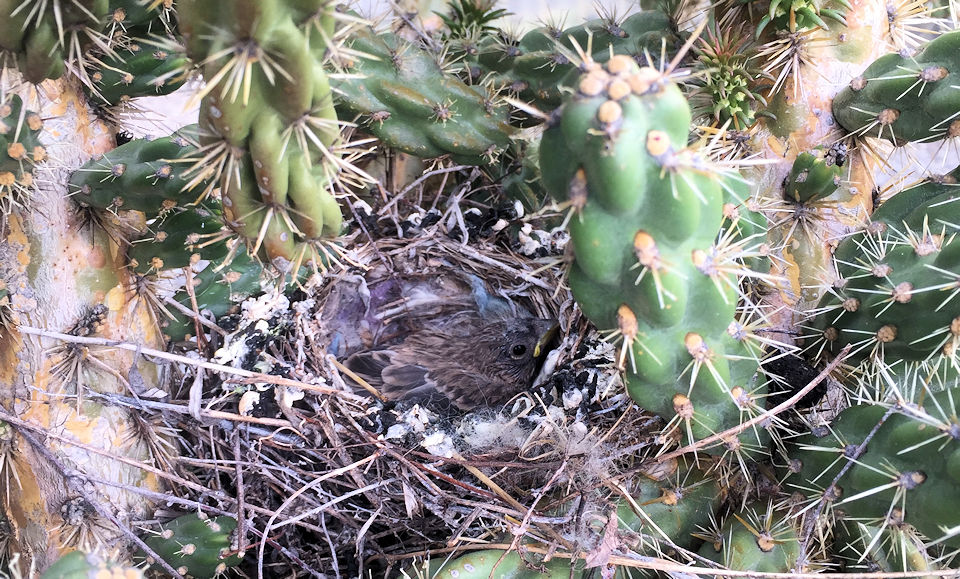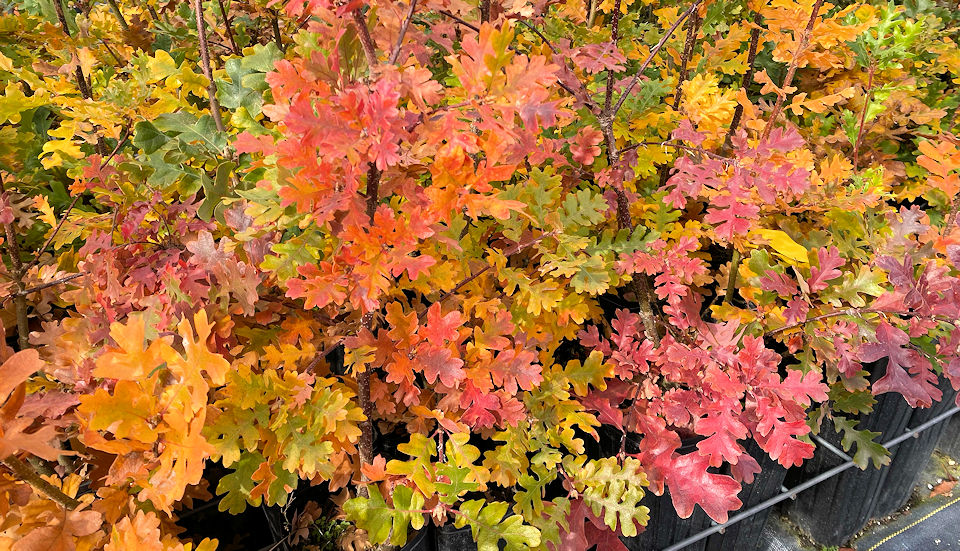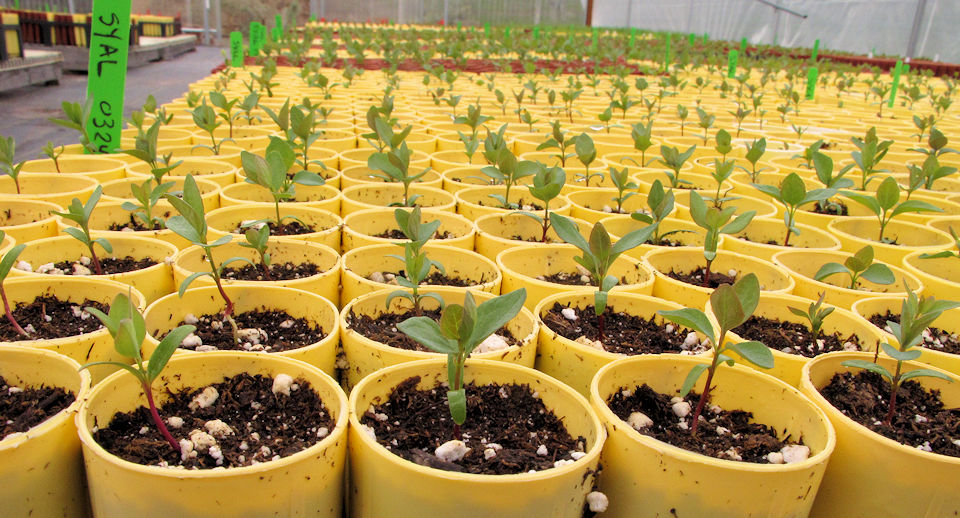Baby Birds Need Native Plants
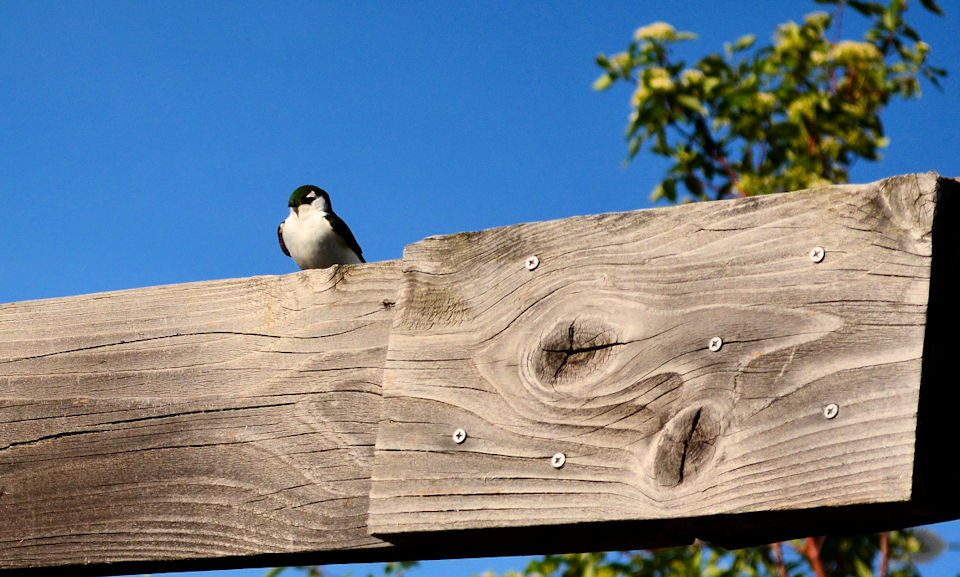

This is the time of year when birds are quite busy raising their young. At our nursery there are at least eight species nesting on the grounds this year: house wrens, violet-green and tree swallows, catbirds, robins, rufous hummingbirds, house finches and Brewer’s blackbirds. Some are nesting in houses we’ve put up (wrens and swallows), and others are in shrubs and trees on the nursery (catbirds, hummingbirds, robins and finches).
Gray catbird; nesting in a clump of mock orange in the nursery, his songs are a delight
Photo by Tony Castro (https://creativecommons.org/licenses/by-sa/4.0/deed.en)
The blackbirds are nesting in and on the nursery plants we are raising, anything from a tray of seedling sumacs to a bin of Douglas fir. We count at least nine separate nests this spring and I am often under attack from protective blackbird parents as I pass near a nest site. They discovered the nursery as a suitable place to raise their young a few years back and each year the nesting colony grows.
Blackbird eggs and chicks, in nests built within maple seedlings
Despite the dive bombing, I’m thrilled to have them as it indicates that the nursery grounds are providing a rich habitat, one with not only good nesting sites and water but, more importantly, FOOD for the babies.
Baby birds of most species, including those that eat mostly seeds and fruits as adults, need a diet rich in protein and fats to grow well and survive. That nutrition comes from insects, and caterpillars, the larvae of moths and butterflies, are the most important source.
Western bluebird with juicy caterpillar Photo by Becky Matsubura (https://creativecommons.org/licenses/by-sa/4.0/deed.en)
Our native flora co-evolved with our native fauna, including birds and insects, of course. Insects, whether moths, aphids, sawflies or others, have specific relationships with their host plants, and birds seek out those plants to find the food critical to their brood. Introduced ornamental plants may provide nesting sites, and fruit and nectar for adults, but are of little benefit for the young. It’s simple: less food=less babies=less birds.
House finch chick – note that the nest is within a large clump of cholla cactus, excellent protection!
Studies show that in habitats with less native plants, and more introduced and invasive non-native species, there is not only less nesting taking place but also fewer birds per nest that are reared successfully. Dr. Doug Tallamy has done extensive research investigating the impact of native plants on native birds and insects, including pollinators. I highly recommend his books, especially his latest, “Nature’s Best Hope: A new approach to conservation that starts in your yard”.
House wren in song
